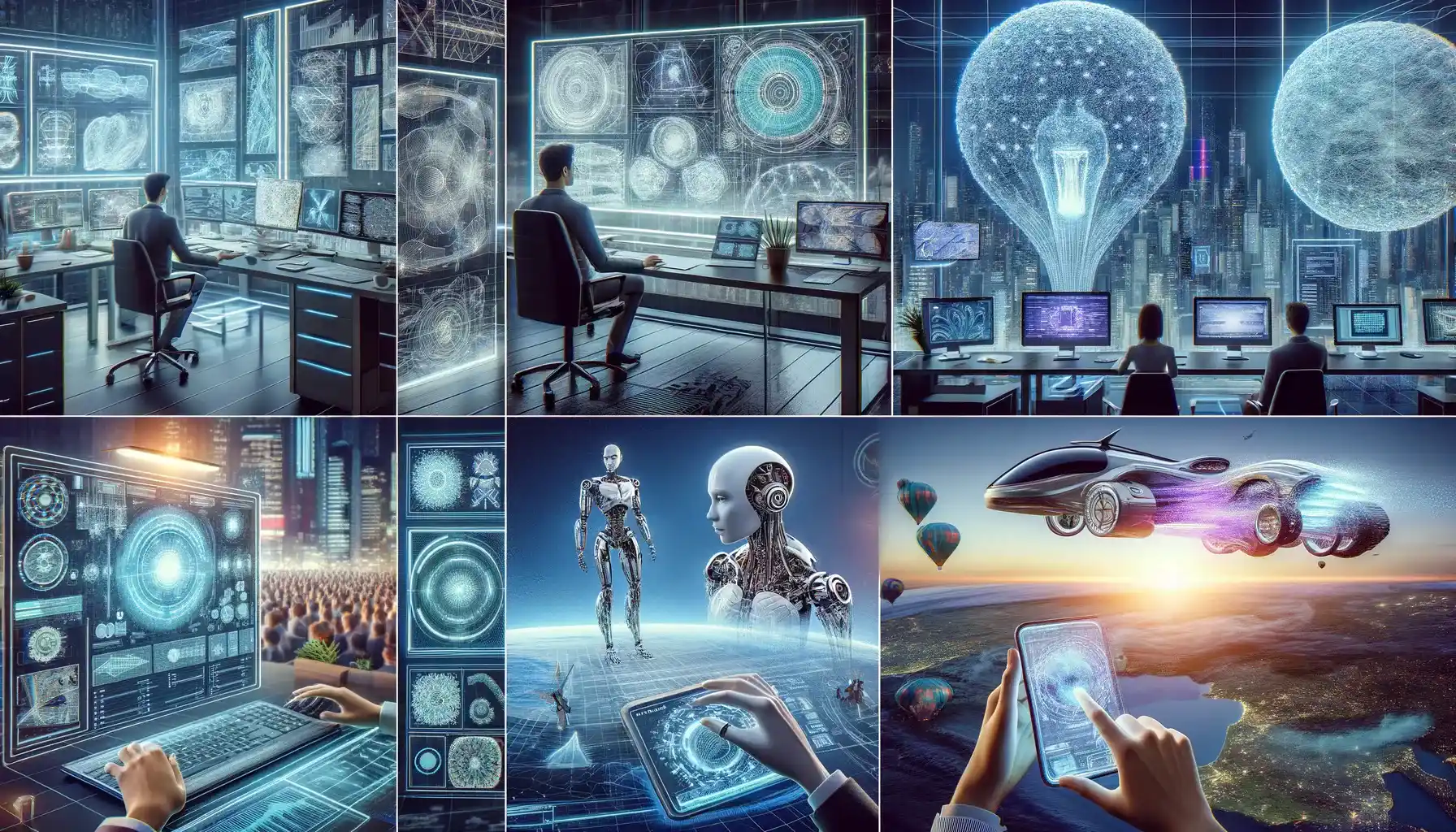Table of Contents
In the domain of artificial intelligence, Generative and Predictive AI are at the forefront of innovation, revolutionizing industries, and redefining possibilities. By harnessing the power of data and advanced algorithms, these technologies offer transformative insights into the future. This article explores ten innovative insights into Generative and Predictive AI, showcasing real-world examples of their applications and potential.

What is Generative AI and Predictive AI?
Generative AI creates new data based on patterns learned from existing data, often used in tasks like generating text, images, or music. Predictive AI analyzes existing data to make informed predictions about future outcomes, commonly applied in forecasting, recommendation systems, and risk assessment.
Ten Innovative Insights into Generative and Predictive AI
1. Understanding Generative AI
Generative AI, such as OpenAI’s GPT models, harnesses deep learning techniques to generate new content that mimics human creativity. By understanding patterns in data, these algorithms can produce realistic text, images, music, and more. Generative AI is distinguished from predictive AI, which forecasts outcomes based on existing data. While predictive models anticipate future events, generative models create entirely new content, offering vast potential in fields like content creation, drug discovery, and beyond.
2. Enhancing Creativity
Generative AI, such as Google’s Magenta project, leverages algorithms to produce novel content in fields like music and art. These systems analyze vast datasets of existing compositions to discern patterns and structures. Using this understanding, they can generate new pieces that push the boundaries of artistic expression.
Predictive AI, on the other hand, forecasts trends and preferences within creative domains. By analyzing user behaviors and historical data, predictive models can anticipate which artistic styles or concepts are likely to resonate with audiences in the future. This foresight enables creators to make informed decisions about their work, enhancing the likelihood of success and impact.
Together, Generative and Predictive AI empowers artists and designers to explore new avenues of creativity while also guiding their decisions to align with audience preferences and emerging trends. This synergy between human ingenuity and AI capabilities promises to redefine the creative process, fostering innovation and originality across various domains.
3. Predictive Analytics in Finance
Generative and predictive AI algorithms are revolutionizing the financial industry, providing essential tools for institutions to navigate complex market dynamics and gain a competitive edge. Generative models, such as Generative Adversarial Networks (GANs), enable the simulation of various market scenarios, empowering hedge funds and investment firms to explore potential outcomes and devise robust strategies. Meanwhile, predictive algorithms analyze vast amounts of historical and real-time data to forecast market movements accurately. Firms like Renaissance Technologies leverage these models to detect subtle trends and anomalies, facilitating timely and informed investment decisions. With continuous learning capabilities, these algorithms adapt to new data, enhancing their predictive prowess and enabling investors to seize lucrative opportunities in dynamic financial markets.

4. Personalized Healthcare
In the healthcare sector, the integration of generative & predictive AI technologies is revolutionizing patient care. Companies like IBM Watson Health are at the forefront of this transformation, leveraging predictive analytics to analyze extensive medical data sets. By employing generative AI, these systems can simulate various patient scenarios, aiding clinicians in devising personalized treatment plans. Predictive algorithms sift through immense amounts of data, identifying patterns and potential health risks early on. This proactive approach enables clinicians to intervene promptly, enhancing patient outcomes and reducing healthcare costs.
Through the synergy of generative and predictive AI, healthcare providers can offer more precise and tailored interventions. By generating diverse scenarios, generative AI assists clinicians in exploring various treatment options and predicting potential outcomes. Meanwhile, predictive algorithms analyze patient data in real time, identifying subtle patterns indicative of disease onset or progression. This dual approach empowers healthcare professionals to deliver personalized care plans, optimizing patient outcomes and improving overall healthcare efficiency. As these technologies continue to evolve, they hold the promise of revolutionizing healthcare delivery by providing more proactive, personalized, and effective interventions.
5. Predictive Maintenance in Manufacturing
Manufacturing companies harness the power of generative and predictive AI revolutionize retail business and their operations and minimize downtime through predictive maintenance. By constantly analyzing real-time sensor data from equipment, these advanced models not only predict potential failures but also generate insights to optimize performance. General Electric is a prime instance, leveraging predictive analytics to proactively manage the upkeep of its industrial machinery, ensuring maximum efficiency and minimal disruptions in production processes.
6. Generative Design in Engineering
Generative design algorithms, powered by predictive AI, revolutionize the engineering landscape by offering unprecedented opportunities to explore an extensive spectrum of design alternatives. Autodesk’s Fusion 360 stands at the forefront of this transformation, integrating generative design capabilities that empower engineers to define constraints and rely on AI algorithms to produce groundbreaking solutions. By leveraging predictive AI, these algorithms anticipate potential design outcomes, facilitating the creation of optimized, efficient, and lightweight structures across various industries such as aerospace, automotive, and architecture. This symbiotic fusion of generative & predictive AI not only enhances the creativity and problem-solving abilities of engineers but also accelerates the innovation process, driving forward the evolution of complex systems with remarkable efficiency and precision.

7. Natural Language Generation
Generative AI, coupled with predictive algorithms, is revolutionizing natural language generation, empowering machines to craft human-like text. Companies such as Narrative Science leverage this technology to automate the generation of reports, articles, and financial summaries. By analyzing vast datasets and predicting trends, these systems streamline communication and enhance decision-making processes, offering insights and narratives that are both informative and actionable.
8. Personalized Marketing
With the integration of generative and predictive AI technologies, marketers now can craft highly personalized experiences for customers by analyzing vast datasets and forecasting behaviors. Platforms such as Salesforce Einstein harness predictive analytics to segment audiences effectively, suggest tailored products, and refine marketing strategies. By leveraging AI-driven insights, companies can significantly elevate customer engagement levels and maximize conversion rates, ultimately leading to greater business success and customer satisfaction.
9. Autonomous Vehicles
Generative and predictive AI play pivotal roles in the advancement of autonomous vehicles, empowering them to comprehend their surroundings and navigate effectively. Employing deep learning algorithms, companies such as Tesla and Waymo harness these technologies to interpret vast streams of sensor data and execute real-time driving decisions. By continuously learning and adapting, these systems strive to enhance safety and efficiency on the roads, marking a significant stride toward the future of transportation.
10. Climate Modeling and Environmental Monitoring
Generative and predictive AI technologies are indispensable in addressing complex ecological challenges and advancing scientific understanding in various fields. DeepMind’s AlphaFold algorithm, for instance, accelerates protein folding predictions, revolutionizing drug discovery and disease understanding. Moreover, predictive models in climate modeling and environmental monitoring enable more accurate weather forecasting and natural disaster prediction, empowering authorities with invaluable insights for effective disaster preparedness and response strategies. These AI-driven advancements not only enhance our comprehension of intricate systems but also hold the potential to mitigate the impact of environmental threats on our planet.

Conclusion
Generative and Predictive AI are driving unprecedented innovation across various domains, from creative expression to predictive analytics. By harnessing the power of data and advanced algorithms, these technologies offer transformative insights into the future, shaping industries and redefining possibilities. As we continue to explore their potential, the impact of Generative and Predictive AI will only grow, unlocking new opportunities and shaping the world of tomorrow.